Academics, advocates, public officials reimagine what’s possible for Gary
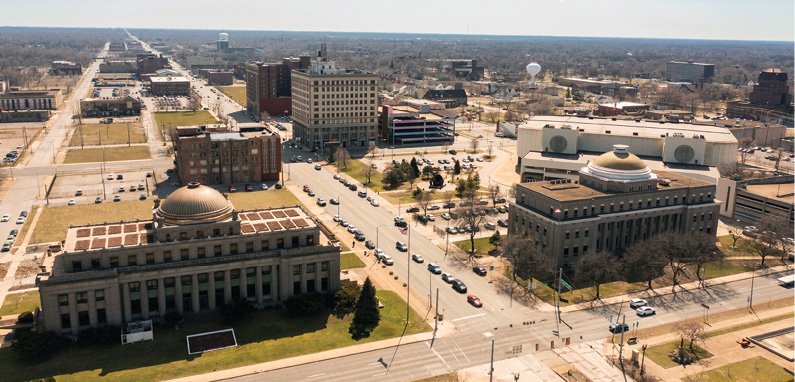
Gary is a long way from being one of those charming Midwest burbs social media gushes about — but supporters can’t help imagining it will be someday.
“I believe in the Gary of the future,” said Vanessa Allen-McCloud, president of the Urban League of Northwest Indiana and a longtime city resident.
“It will have nice beaches, a marina full of boats, an airport with lots of passenger and cargo air traffic, new apartments for young professionals and crowds arriving for a local festival, as well as downtown shops and restaurants,” she said.
Micah Pollak, associate professor of economics at IU Northwest, said that dream is not out of reach. “Of all the cities in Northwest Indiana, Gary has the most potential for positive change,” he said. “The list of what Gary has to offer is just staggering.
“We are close to Chicago, and major interstates and railroads converge on Gary. We are on Lake Michigan where you have Port of Indiana-Burns Harbor and the Indiana Dunes National Park.”
He is sure these positives will lead to better opportunities.
“Many rural communities of the Midwest would greatly enjoy these kinds of amenities,” he said.
Upcoming enhancements

Pollak said local government leaders now need to make hundreds of millions of dollars in public development initiatives work.
Those projects include:
- South Shore Line expansion, a second set of tracks permitting eastbound and westbound passenger trains to pass each other and shorten commuting time.
- Transportation Development Districts, rebuilding the Gary Metro and Miller South Shore stations to prime commercial development around them.
- Fiber Smart House, repurposing the historic Union Station on Broadway into a state-of-the-art training hub for a technology workforce.
- Gary/Chicago International Airport expansion, extending runways and building infrastructure to attract new cargo-related businesses.
- Tolleston Opportunity Campus, a hub featuring affordable childcare, quality-of-life programing, urban gardens, physical therapy, urgent care services and job training.
“As soon as Midwest investors recognize that potential, you will create a critical mass,” Pollak said.
Galvanizing the community will be another catalyst.
Diana Morrow, director of the Gary Public Library and Cultural Center, also is hopeful about Gary’s future. She believes her system will eventually consolidate to a single building — the cultural center of the downtown renewal district near bus and South Shore routes.

Groups like Brown Skin and IronWorkz Corp. are creating opportunities to bridge the gap between equitable development and community investment.
IronWorkz, a nonprofit run by three young Hoosiers who grew up in and around Gary, wants to boost the city’s economy by offering networking space for Gary residents starting out on their entrepreneurial journeys.
The Steel Studio Foundation has plans for turning 10,000 square feet of the historic Gary State Bank building into a creative incubator downtown.
In August, officials announced the development of an $8 million Fiber Smart House that will open in fall 2024. The iconic Gary Union Station will house the 10,000-square-foot state-of-the-art technology workforce and educational training hub.
“Our city has a proud history and a bright future, and this development is as symbolic as it is significant,” said Mayor Jerome Prince in a press release. “Choosing the iconic Gary Union Station as the home for this project is emblematic of where we have been and our vision for where we will go next.”
Projects and organizations like these, Prince said, will level the playing field for Gary.
Boom town interrupted
Rising from little-used swamp and sand barrens a century ago, Gary became a Midwest workshop with construction of the world’s largest integrated steel mill. It became home to immigrants from 50 nationalities and African Americans from the South.
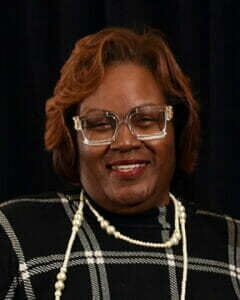
Gary peaked at 178,000 residents six decades ago. Since then, industrial automation that eliminated blue-collar jobs, racial tensions and disinvestment by private business have pushed most of its population elsewhere, leaving behind a city of fewer than 69,000.
U.S. Steel’s Gary Works still employs more than 4,300 people. Dan Killeen, its vice president, said recently that, “U. S. Steel has made significant investments in its facilities at Gary Works, and in the local community, to ensure that we remain part of the fabric of Gary.”
Gary’s Indiana University Northwest campus, RailCats baseball stadium, Marquette Park Pavilion and ArtHouse: A Social Kitchen stand in sharp contrast to abandoned schools, derelict houses, and vacant and collapsing storefronts.
But Joslyn Kelly, who was born and raised in Gary, saw the lack of businesses as an opportunity. Instead of complaining about not having restaurants that serve quality, balanced meals, she opened one.
“We embarked upon a mission,” she said, opening a small carryout restaurant that has grown into J’s Breakfast Club at Interstate 94 and Broadway.
“A lot of people focus on Gary’s poverty level, which is less than 30 percent,” she said. “That gives 70 percent with enough disposable income to meet the needs of businesses.”
Gary’s next mayor
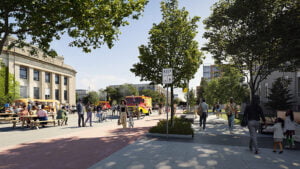
Gary residents have shown their impatience for a better future at the voting booths, having replaced two incumbent mayors in the last four years.
State Sen. Eddie Melton will take over the reins of City Hall this January, upsetting Mayor Prince with a campaign promising bold changes.
“We have to make sure every neighborhood has access to quality parks,” Melton said.
He will strive to give city police and fire departments up-to-date equipment and technology as well as work with local vocational schools to recruit new public safety workers.
“The Gary/Chicago International Airport is primed for success,” he said. “I’ve already spoken with Chicago Mayor Brandon Johnson, and we hope to work together to get the best impact with the (airport) compact we have with them.”
He also would like to develop Gary’s Buffington Harbor on Lake Michigan for warehousing, distribution and logistics centers.

He is lobbying the state to build a convention center on Interstate 80/94.
“There is no reason we shouldn’t be able to attract more revenue around the Hard Rock Casino,” he said. The casino is the state’s most popular, according to reports from the Indiana Gaming Commission.
Melton said he also has been working closely with the Regional Development Authority to develop downtown in conjunction with the Transportation Development District around the South Shore’s Metro Center.
“We have robust plans to grow the downtown’s population,” Melton said.
Infrastructure plans
Sherri Ziller, president and CEO of the Regional Development Authority, said Gary will “definitely benefit” from the $649 million double-track project. The 16.9 miles of a second track along the South Shore Line between Gary and Michigan City is projected to bring $2.5 billion in development to the Region.

The first phase between Michigan City and Dune Park station was completed in October. Trains should start running along Gary’s section in May 2024.
Ziller said the project also will help create 6,000 more jobs in the next 20 years.
“We are pivoting to Chicago, to enable Northwest Indiana to claim our rightful place as a suburb of Chicagoland — giving access to permanent higher-paying jobs in Chicago and make Northwest Indiana a good place to raise a family and do business,” she said.
The project also makes room for a new Miller Station with more than 500 parking spaces.
U.S. Rep. Frank Mrvan said the federal subsidy to double track the South Shore Line “will cut the travel time to one of the largest economies in the Midwest.”
Estimated travel times from Miller Station to Chicago should decrease to less than an hour during peak times.

Mrvan also pointed out that funds have been earmarked to lay quantum computer fiber through Gary to form a Computing Super Highway. It will offer affordable high-speed internet to connect city households with school eLearning and commercial connectivity for businesses.
“This puts the city on track to tell the world Gary is open for business,” he said.
The airport is ready too.
“We’ve worked with the airport to bring $8 million in the last three years that will extend the (runways’) heavy air cargo apron,” Mrvan said.
The return of the air show this summer also pointed to good things to some. Airport officials said the 2015 runway extension and other infrastructure investments were on display for all to see.
The airport also served as a staging area for the 2023 Chicago Air and Water Show.
“This is just one example of how the airport continues to support various Chicagoland area events, servicing an incredibly important cog in Chicago’s air traffic system as Chicago’s third official airport,” said Executive Director Dan Vicari in a press release.
Green regeneration
The city also hosted the Climate Leadership Summit in September at IUN. The statewide conference brought together mayors, city, town and county leaders, and community partners to discuss climate change. It was a big win for the city.
Gary has another environmental advantage, according to Joseph Schilling, a senior research associate for the Washington, D.C.-based Urban Institute. He said a “green regeneration” is needed across the country to help buffer cities from climate change. Gary has large tracts of trees on land once platted for now phantom subdivisions.
“All its vacant spaces give it, in some way, a leg up compared to other cities to have a more sustainable future,” Schilling said.
Mrvan also pointed to the Environmental Protection Agency’s commitment to restore the Grand Calumet River and Lake Michigan after decades of industrial pollution. However, Schilling cautioned that the city should not repeat the errors of the past.
“Green regeneration must be done with equity,” he said. “Gary once had segregated neighborhoods and a legacy of environmental injustice. It will be important to make sure all neighborhoods benefit.”
Prince, who spent most of his life in Gary and plans to stay, said he understands concerns about how gentrification could disadvantage current residents. But he also is realistic about what it will take to rebuild Gary.
“It is going to take a significant investment from folks outside the city,” he said.
That kind of investment also will require Gary’s crime rate to continue falling. It has significantly decreased from a recent high in 2013. According to City-Data.com, the crime rate in Gary also fell by 14% from 2019 to 2020.
The Gary Police Department credits its automated license plate readers program with helping in 375 investigations during its two years of implementation.
“The Gary Police Department has taken significant strides through procurements of technology, and the advancements that have occurred are nothing short of amazing,” according to a recent announcement.
Schools on the brink


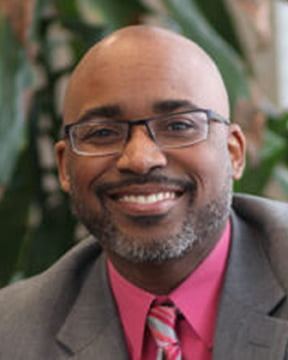

The Gary Community School Corp.’s viability plummeted in recent decades with the rise of private charter schools. The public school district’s enrollment declined from over 40,000 students in the 1960s to 4,770 today, according to U.S. News and World Report.
“We also have to address our schools,” Prince said. “They are making some strides now, but academically we continue to suffer. You just can’t dismiss that.”
State officials took over the school district six years ago to impose fiscal responsibility after it ran multi-million-dollar budget deficits. Conditions have improved enough to transition back to local school control.
Danita Johnson, president and CEO of Gary’s Edgewater Health, is one of five new appointed school board members who took office in July.
“I hope we can create an environment to provide our students with improved reading skills and relevant curriculum that address new opportunities and create a new wave for our community,” she said. “That is how we are going to grow.”
Shontrai Irving, a clinical associate professor of business law at Purdue University Northwest, is another new Gary school board member.
“There are a lot of people pulling for our city,” he said. “We just need to come together and focus on what we can do now to make a difference.”
But, he said, implementing the plan will take a little faith.
“Our political leaders, residents and children need to buy into it,” he said. “Local government has to ask the community how they can be a part of it and decide what the priorities are.”
Indiana University Northwest is buying into the recovery of the public school system, said Mark Sperling, interim dean of Indiana University Northwest’s School of Education.
IUN has been working for years with the school administration to provide some Gary school instructors with professional development needed to win full state teaching licenses.
“I come out of Detroit, so I know what must be done, and I know Gary can do it,” Sperling said.
Sperling said the new school board appears focused on improving academics, and he expects it to develop a strong and updated curriculum.
“We have been working with parents to see that it’s important for their children to go to school.”
Bold future
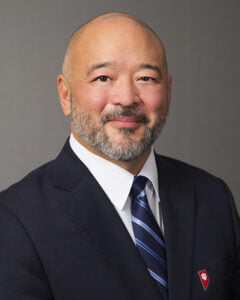
IUN Chancellor Ken Iwama said that Indiana University Northwest has been a part of educating Gary for almost 65 years and will continue to do so.
That includes partnering with the city on programs like the Start UP Business Success Program, a bootcamp program for entrepreneurs. Some of the about 50 participants who proposed businesses, include:
- Elyssa Lampton — EDL Designs, an epoxy countertops and flooring company
- J’Kia Tatum — Transparent Progression, offering life coaching
- Emmani Ellis — No Limit Living LLC, real estate development and woman empowerment
- Tieanna Walker — Walker P&E Services, youth empowerment and life skills development for foster care youth
The city is using American Rescue Plan Act funds to offer the program’s entrepreneurs a chance at grants to make their dreams a reality. The courses were taught by faculty at the School of Business and Economics through the Business Academy.
Energy filled the room at one session where participants agreed that “Gary is coming back!”
Centier Bank also is investing in the education of youth in Gary. The Merrillville-based company launched a financial literacy program in partnership with the John W. Anderson Boys & Girls Club of Gary.
“By providing financial education and literacy to our youth, we are handing them the keys to unlock a poverty-free future,” said Yolanda Davis, community reinvestment act officer at Centier Bank.
Iwama pointed out that educational programs will lead to a better tomorrow.
“When our students thrive, so does the Region,” he said. “We will fulfill our mission in driving talent, expertise and economic development by working together in realizing the promise of our collective future.”
Kelly, whose restaurant is just off the highway, has known Gary’s future is bright from the start.
“The opportunities are limitless,” she said.
Read more stories from the current issue of Northwest Indiana Business Magazine.
- Michigan City: Careful plans for prosperity
- Crown Point: Responsible growth
- South Bend: Development around South Bend
- Gary: Vision for Steel City
- Portage: ‘People like Portage’
- Merrillville: ‘Heart of the Region’
- La Porte: ‘Living the Lake Life’
- Elkhart: Heart of the city
- East Chicago: Diamond in the rough
- Highland: Small town, big momentum
- Goshen: ‘Unlike anywhere else’
- Chesterton: Big downtown plans

